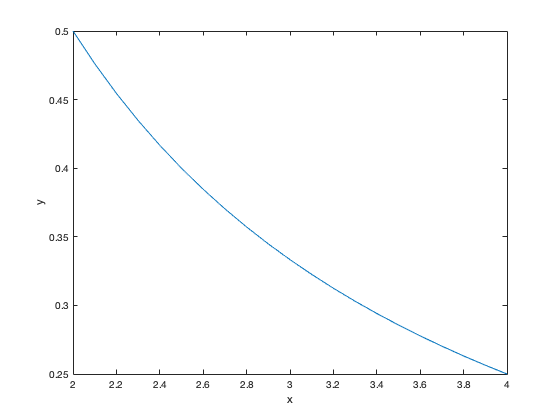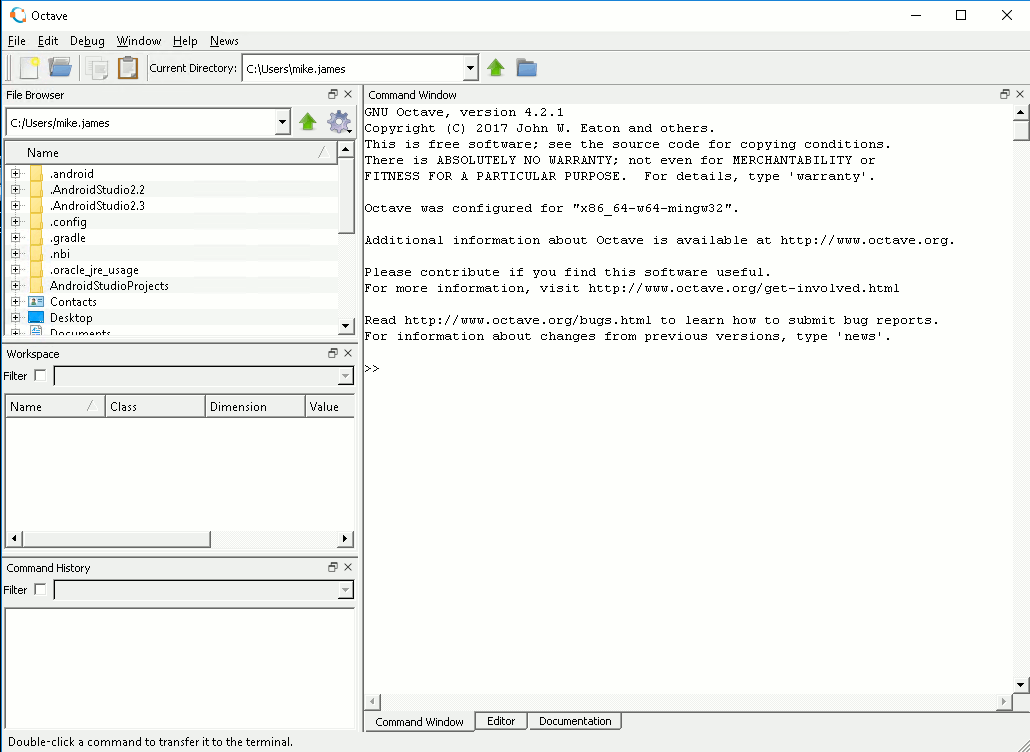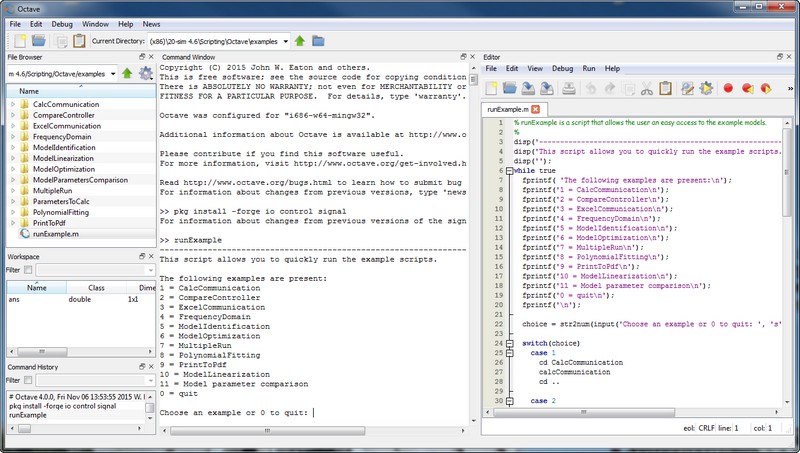
- #WRITE SUBSCRIPT GNU OCTAVE HOW TO#
- #WRITE SUBSCRIPT GNU OCTAVE INSTALL#
- #WRITE SUBSCRIPT GNU OCTAVE FULL#
- #WRITE SUBSCRIPT GNU OCTAVE FREE#
The variable types are inferred by the value that is assigned to the variable. There is a convenient option to rename them with a custom label by using the as specification: Libraries and modules can be imported in Python as an object (as in the first line in the example) with all the functions and members of the library. This line informs the command-line interpreter that the script needs to be executed by the program python3. The fitting_python.py example uses comments to insert licensing information in the source code, and the first line is a special comment that enables the script to be executed on the command line: #! /usr/bin/env python3 In Python, comments are achieved by putting a # at the beginning of the line, and the rest of the line will be discarded by the interpreter: # This is a comment ignored by the interpreter.
#WRITE SUBSCRIPT GNU OCTAVE INSTALL#
Installing them in Fedora is easy: sudo dnf install python3 python3-numpy python3-scipy python3-matplotlib Commenting code NumPy for convenient array and matrices manipulation.To develop with Python, you need the interpreter and a few libraries. It has a comprehensive standard library and is generally very pleasant to use (I have no reference for this last statement it is just my humble opinion). It is an interpreted language therefore, the source code is read and evaluated by a program that executes the instructions. Python is a general-purpose programming language that is among the most popular languages in use today (as evidenced by findings from the TIOBE index, RedMonk Programming Language Rankings, Popularity of Programming Language Index, State of the Octoverse of GitHub, and other sources). This task will use only the first set (i.e., the first two columns). The data file is a text file with tabs as column separators and a few lines as a header. This is a set of artificially constructed data that gives the same results when fitted with a straight line, but their plots are very different. The example data is the first set of Anscombe's quartet, shown in the table below. This is a common situation that many data scientists have encountered. Interpolates the data with a straight line (i.e., f(x)=m ⋅ x + q).The program you will write in this series:
#WRITE SUBSCRIPT GNU OCTAVE FULL#
The full examples are available in the polyglot_fit repository. It is not intended to be an exhaustive comparison of the languages, just a little showcase.Īll of the programs are meant to be run on the command line, not with a graphical user interface (GUI).

#WRITE SUBSCRIPT GNU OCTAVE HOW TO#
To that ends, I will explain how to write a program in Python and GNU Octave for a particular task you could classify as data science. If you are already familiar with one of the languages, start with that one and go through the others to look for similarities and differences. To get a feeling for a new programming language (and its documentation), I always start by writing some example programs that perform a task I know well.


Then a friend suggested I try Python, and life became much easier.
#WRITE SUBSCRIPT GNU OCTAVE FREE#
Life was hard and dangerous in those years, as I had to manually allocate memory, manage pointers, and remember to free memory. When I started programming, the only language I knew was C. Why? It is mostly a combination of boredom with the old ways and curiosity about the new ways. Choosing Python and GNU Octave for data scienceĮvery so often, I try to learn a new programming language. Some are well-known for solving problems in this space, while others are lesser-known. This article will help you become familiar with doing data science with some popular languages.


 0 kommentar(er)
0 kommentar(er)
